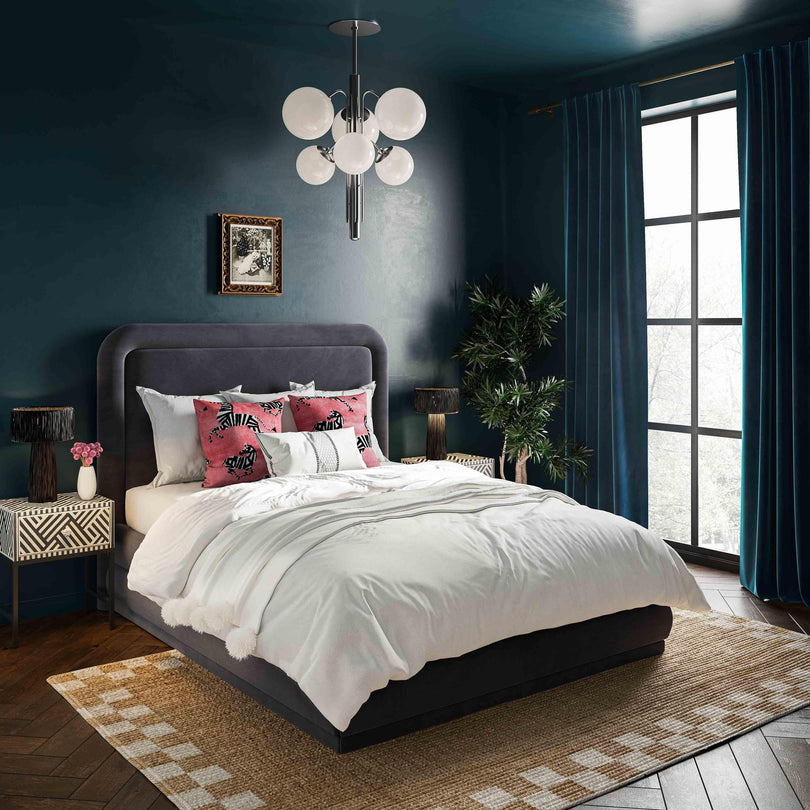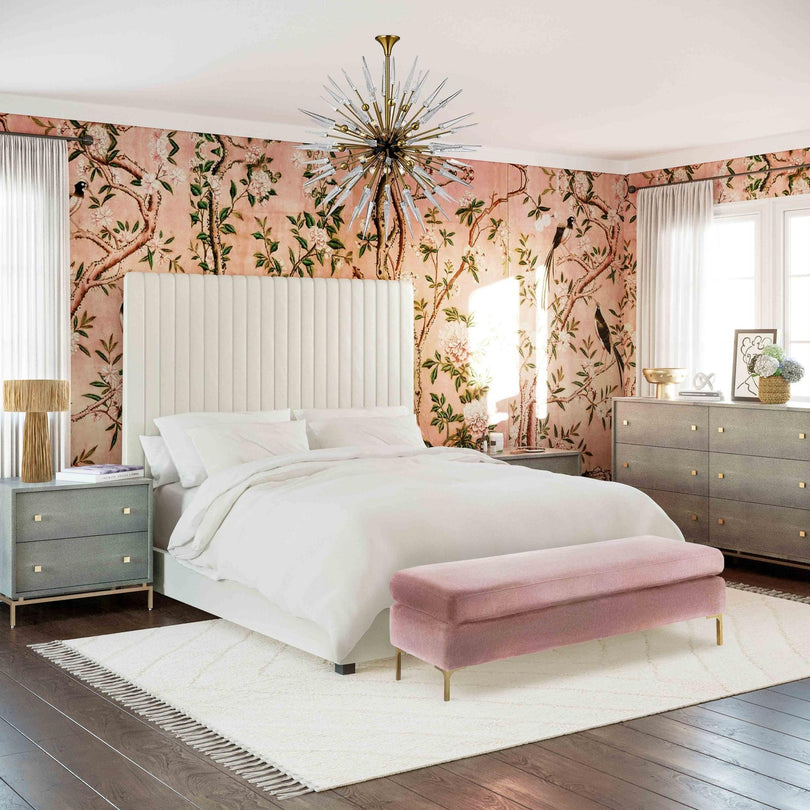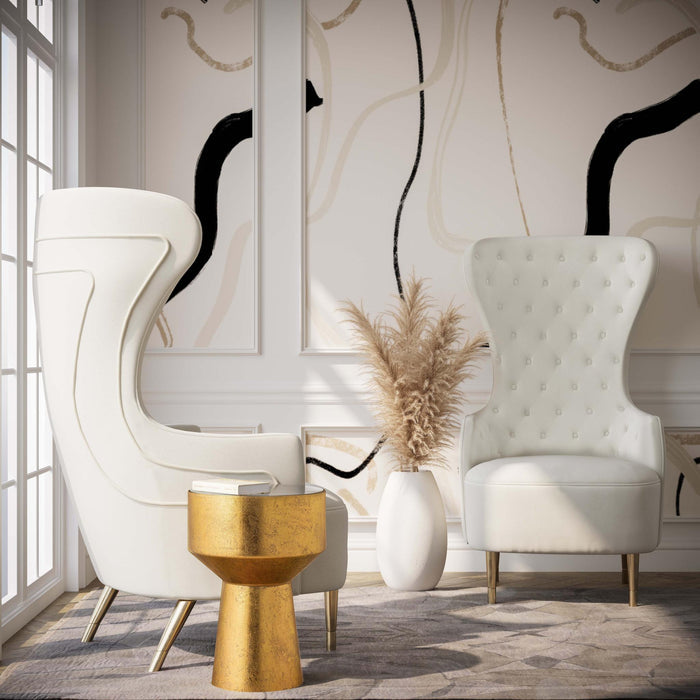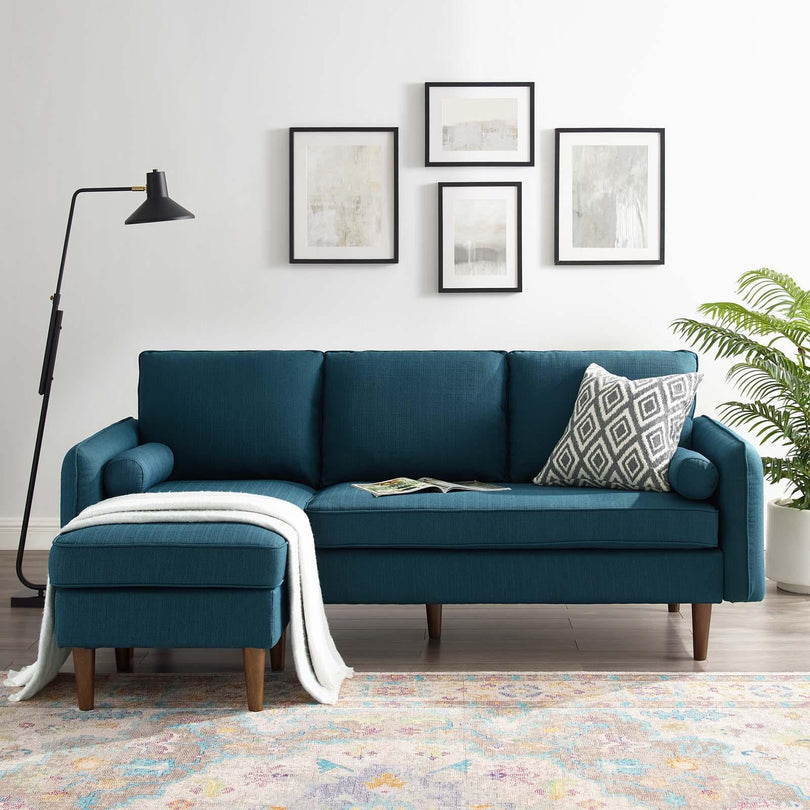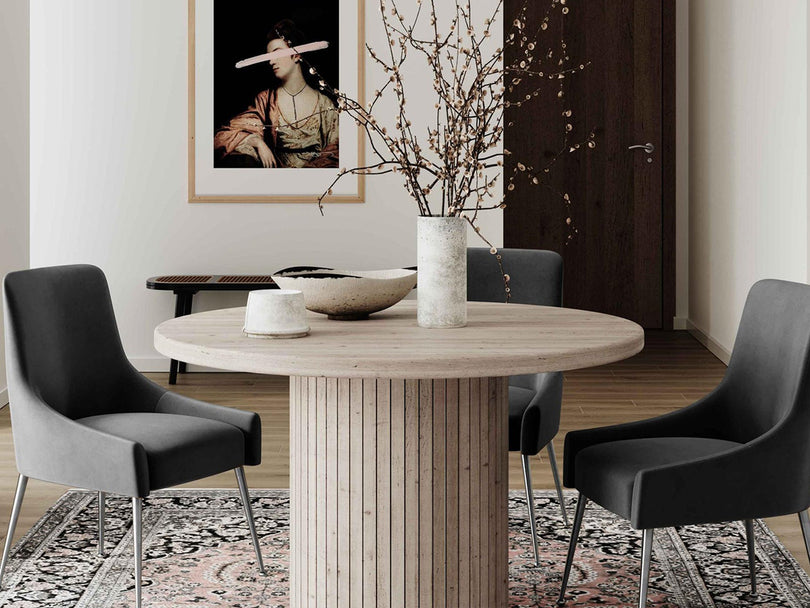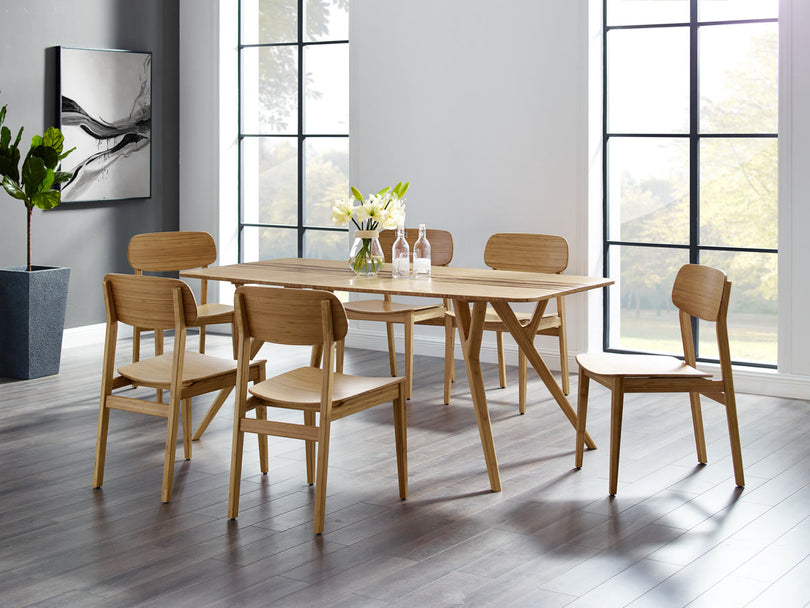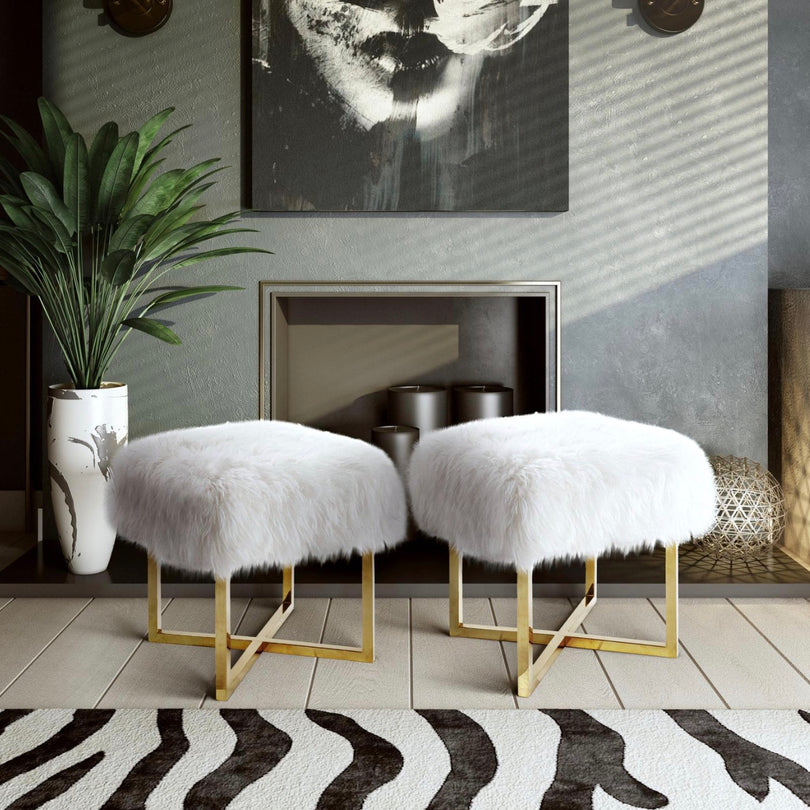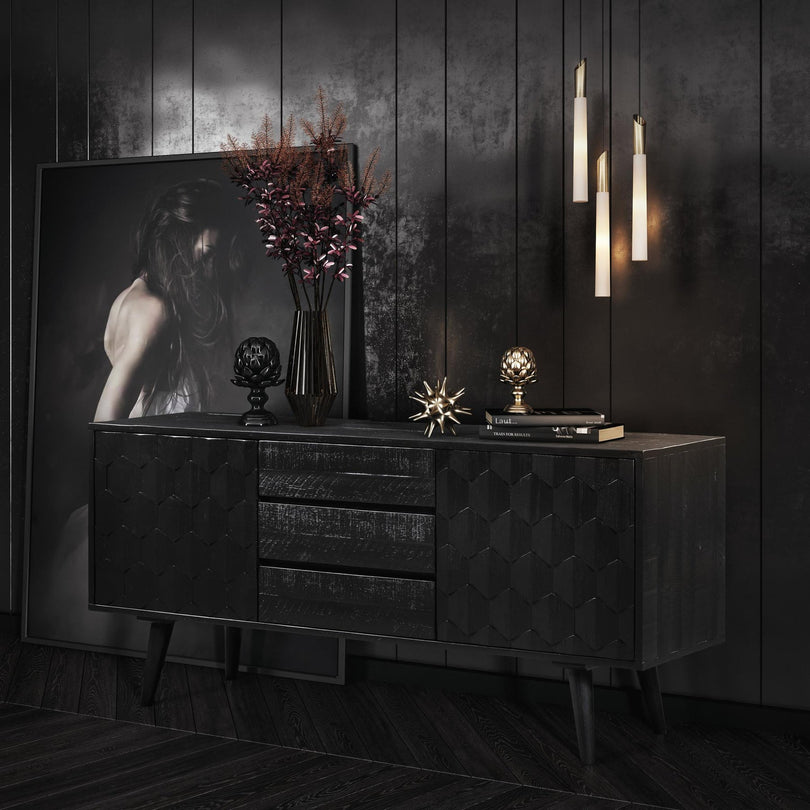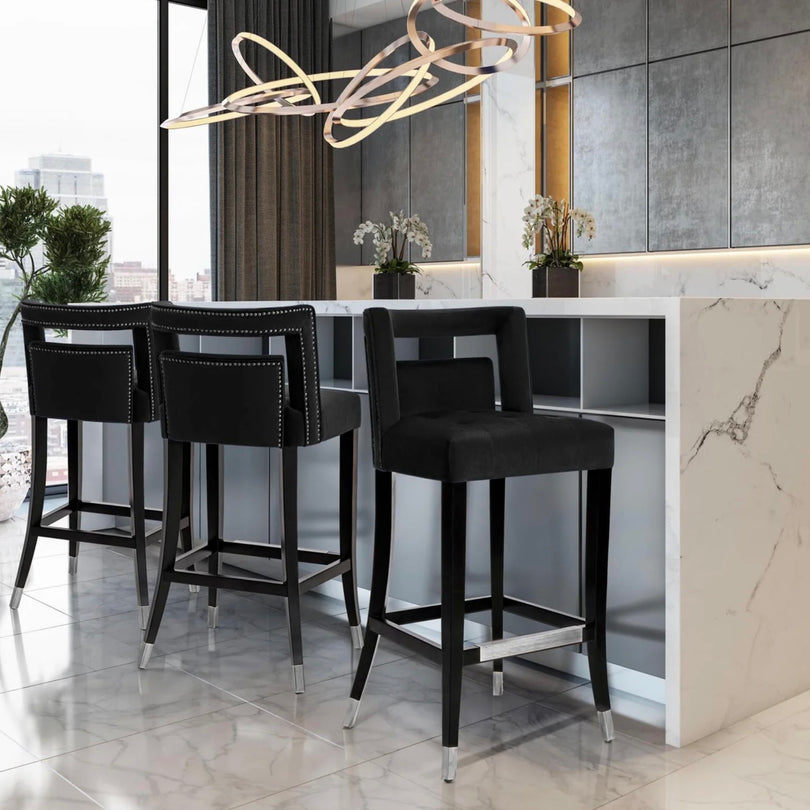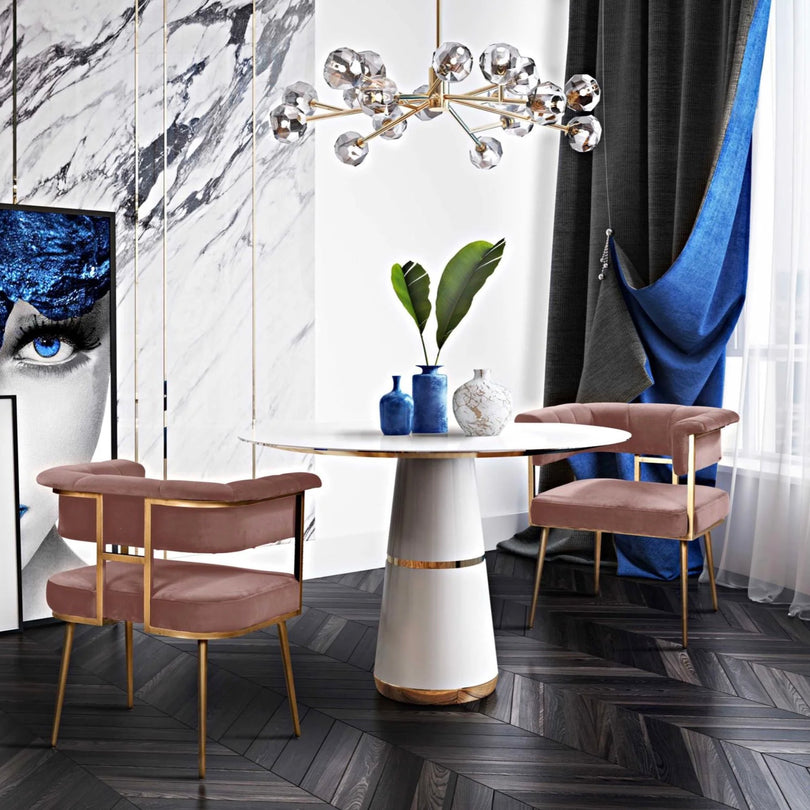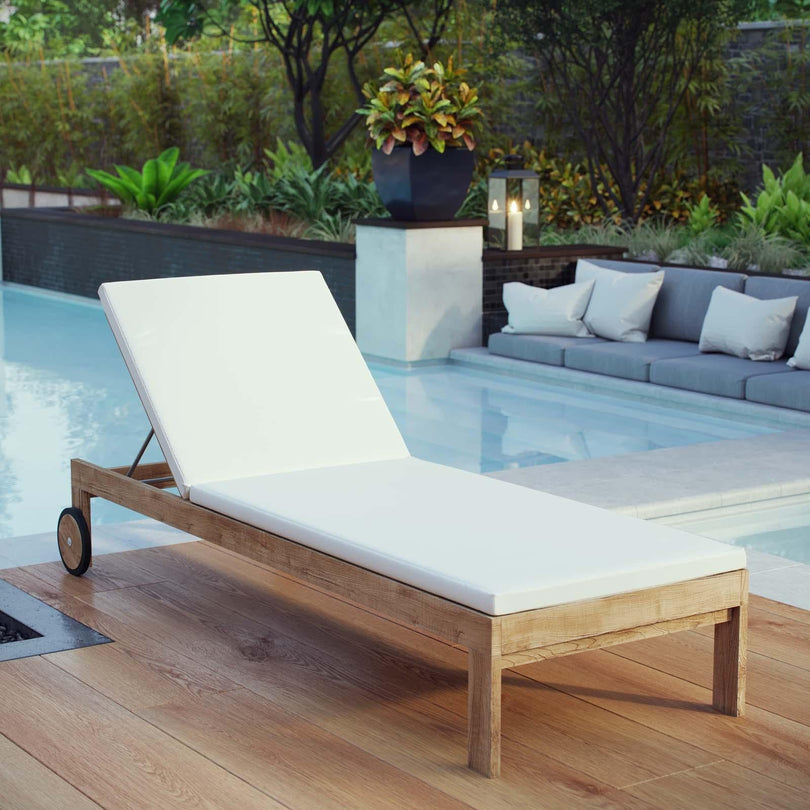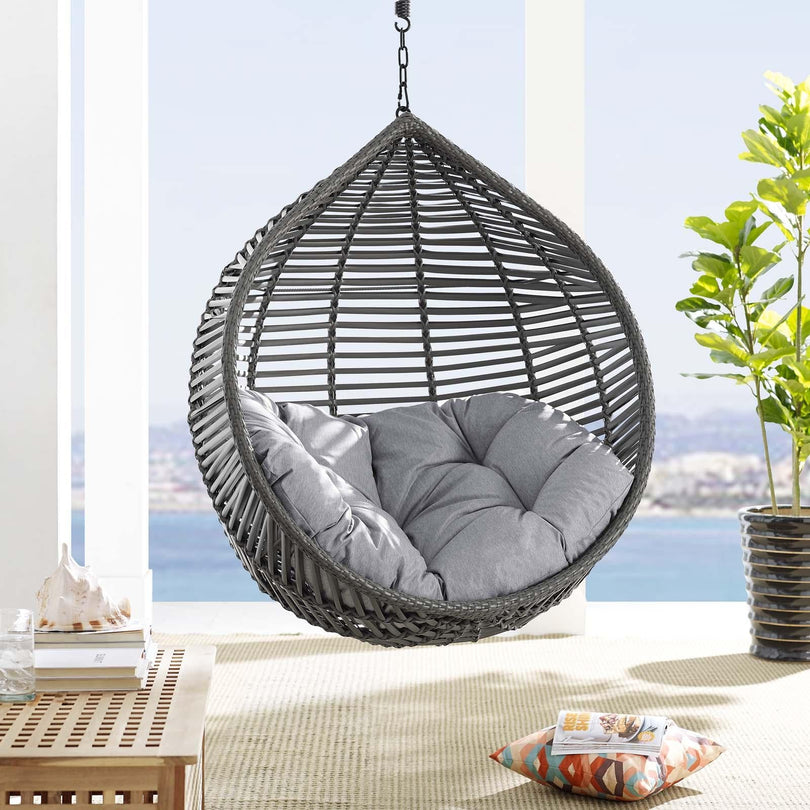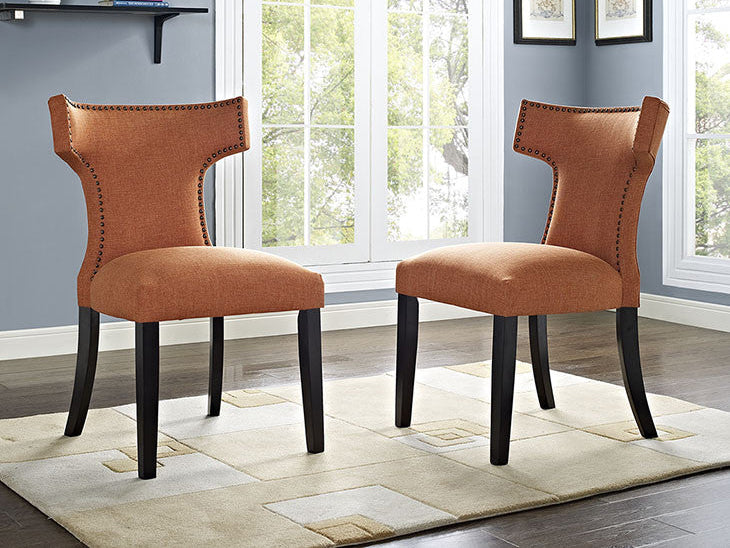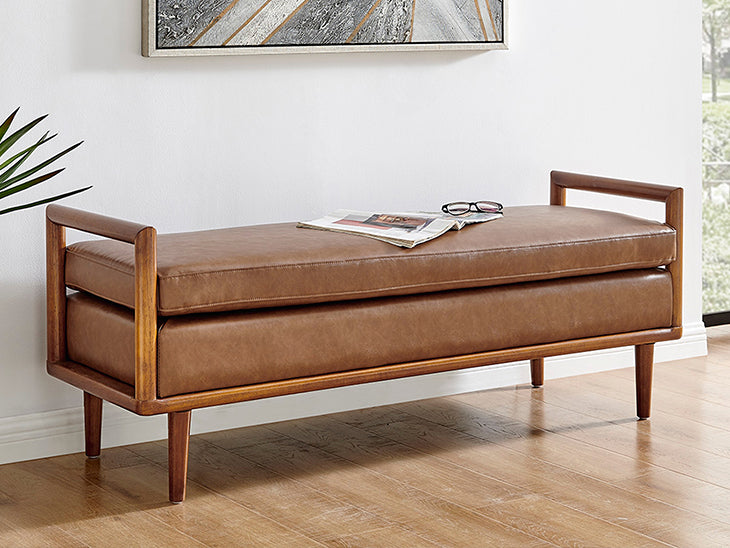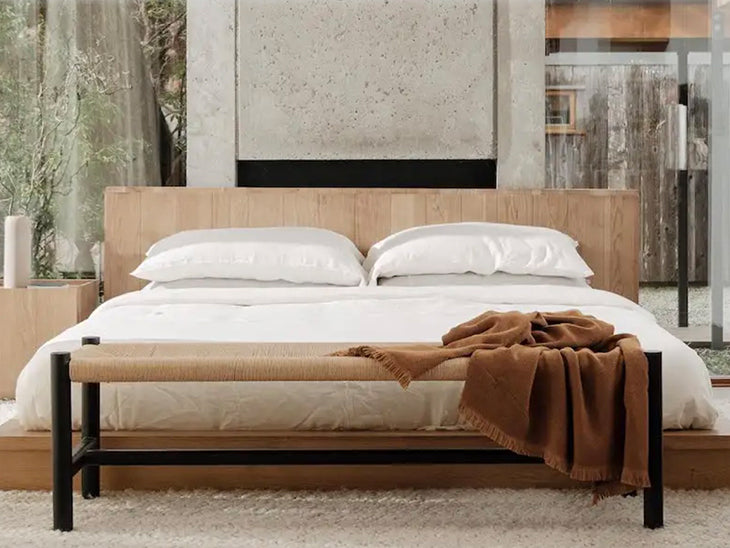Step into the world of minimalist design, where less is definitely more. Minimalism, a design philosophy that focuses on reducing elements to their bare essentials, has gained tremendous popularity in recent years. From architecture to fashion, and more pertinently, to interior design—minimalism is reshaping the way we perceive and experience our living spaces.
Embracing minimalism in furniture design can bring about an elegant simplicity, shedding the unnecessary without sacrificing style or function. Experts predict that this bare aesthetics trend will continue into 2024. This article explores the emergent minimalist furniture trends of 2024, offering insights into how you can incorporate them into your home while highlighting the benefits and addressing the challenges of such a design approach.
So, ready for a makeover? Join us on this journey into the future of interior design to inspire your minimalist pursuit!
Understanding Minimalism
Embracing simplicity in our over-cluttered and over-stimulated lives can yield profound benefits, and the minimalist philosophy aims to do exactly that. But what does 'minimalism' truly entail, and how can it be applied to our surroundings, specifically in terms of design? In the following sections, we'll delve deeper into the history of minimalism and the key principles of minimalist design.
Brief History of Minimalism
Minimalism, as an aesthetic concept, has its roots in post-World War II Western Art, particularly in the visual arts and music. Distilling the essence of an object or idea to its simplest form, minimalism sought to question the very nature of art and creativity. One of the most influential movements in modern design, it impacted not just visual arts but architecture, music, and even literature.
Pioneers of this style such as Donald Judd and Agnes Martin emphasized the importance of the viewer's experience, believing that the beauty of an artwork lies in its perception rather than in decoration or embellishments. This 'less is more' approach revolutionized the design world and set the stage for the future developments of minimalist design.
Key Principles of Minimalist Design
Minimalist design is far from bland or uninspiring; it's the embodiment of the adage, "Simplicity is the ultimate sophistication." Here are some fundamental principles that define minimalist design:
- Clarity and functionality: Every component in a minimalist design serves a purpose. The clarity of design ensures users aren't bombarded with unnecessary information or distracted by excessive elements.
- Limited color palette: Minimalist design typically sticks to a monochromatic or limited color palette. This approach amplifies the visual impact of a design and creates a clean, cohesive look and feel.
- Maximization of white space: In minimalist design, empty space isn't just emptiness; it's an integral part of the design that creates balance and harmony.
Remember, minimalism isn't just an aesthetic choice; it's a lifestyle that celebrates the beauty of simplicity and functionality. It encourages us to remove unnecessary clutter from our surroundings, freeing us to appreciate the essential and meaningful parts of life. This philosophy, though dating back to the mid-20th century, resonates powerfully with our present-day yearning for simplicity and clarity, underscoring its timeless appeal.
Evolution of Minimalist Furniture Design
From an epoch where royal extravagance symbolized opulence to an era favoring simplicity, the trajectory of interior design has indeed traveled a long way. Easily considered one of the most influential principles in the design world, Minimalist Furniture Design has had quite a journey. Let's embark on an enriching exploration of the evolution of this design style, carving its identity in the 20th century and flourishing into vibrant contemporary trends in the 21st century.
Minimalism in the 20th Century
Minimalism, despite its far-reaching implications across various forms of art, etched a significant presence in the furniture design landscape in the 20th century.
Here are some critical developments that earmarked its journey:
- Post-Second World War Era: Widespread economic hardships led to an affinity for material economy and functional aspects over unnecessary ornamentation. Consequently, furniture designs became lean yet functional, with designers opting for less material and more skill.
- Mid-century Modern period: This era saw the explosion of minimalist design, with legendary creators like Ludwig Mies van der Rohe and the Eames' shaping the form. They championed the motto "less is more," shaping furniture pieces with simple layers and forms, focusing on elemental simplicity and functionality.
- Late 20th Century: Minimalist designs became synonymous with sophistication and modern urban lifestyles towards the end of the century. Architect Tadao Ando's work best represented this period, merging traditional Japanese design elements with modern architectural concepts.
"Our houses are such unwieldy property that we are often imprisoned rather than housed in them." - Henry David Thoreau
These were just a few snapshots of how Minimalism in furniture design evolved throughout the 20th century. As we moved into the new millennium, this design principle started taking new shapes and forms, adapting to the shifting societal values and individual preferences.
Minimalist Furniture Trends in the 21st Century
As we continue our journey into the 21st Century, we witness a distinct growth and transformation in Minimalist Furniture Design. Here's how this design principle has evolved in contemporary times:
- Simplicity Meets Luxury: Minimalism in the 21st century has taken a leap away from mere simplicity to minimal luxury. Designers currently focus on creating a balance between simplicity, high functionality, and elevated aesthetic appeal.
- Eco-friendly Designs: An increased awareness of our environment has stirred the 'green' movement in design. Minimalistic furniture now incorporates materials like bamboo, reclaimed wood, and other sustainable materials into its construction process.
- Modular Furniture: With reducing home and office spaces, modular minimalist furniture is on the rise. It not only ensures a clutter-free aesthetic but also optimizes space utilization.
From its humble beginnings to transformative evolution, Minimalist Furniture Design has effectively bridged the gap between the artistry of design, functionality, and the ever-evolving user needs. Evidently, the motto of 'less is more' continues to resonate in the furniture design landscape, shaping spaces, narrating stories, and sculpting lifestyles. It highlights the power of minimalism that goes beyond mere aesthetics, embracing a philosophy that finds beauty in simplicity and celebrates the charm of the understated. Long live Minimalist Furniture Design!
Top Predicted Minimalist Furniture Trends of 2024
Are you intrigued by the thought of redecorating your space with an appreciation for sophisticated simplicity? Or perhaps, you simply enjoy keeping track of the most relevant design trends? Whatever the case may be, as 2024 approaches, you might be curious about the direction that minimalist furniture trends are headed. Immerse yourself in our predictive insights, and let's explore what exciting, minimalist furniture trends are expected to take precedence in 2024.
Stripping Back to the Basics
First and foremost, the minimalist furniture design scene is anticipated to revert to its core essence—a celebration of functionality and spaciousness. This implies that pieces with a "less is more" aesthetic that allow for maximum use of space while avoiding unnecessary clutter will be the spotlight. Here are a few key aspects that are projected to embody this trend:
- Clean Lines: Furniture with clear-cut, streamlined shapes and a lack of unnecessary detail will be the order of the day. Less fuss, more focus on useful design.
- Neutral Colors: Minimalist designs are set to rely heavily on a palette of whites, grays, and earth tones. Such color selections help create a soothing sanctuary that facilitates relaxation and concentration.
- Simplicity: Where there were once ornate embellishments and complex textures, expect simpler, understated design elements. Remember, in the world of minimalism, it's all about distilling design to its purest form.
Effective Use of Accents
Another interesting trend anticipated in 2024 is the effective use of complementary accents. These "accents" won’t necessarily be different furniture pieces or decor but rather engaging features within the design of the furniture itself. An example could be a stylish, wood coffee table with a smooth, polished concrete insert. Accents such as these are anticipated to add an unexpected twist to the simplicity of minimalism, enhancing the intrigue and visual appeal.
Sustainable, Eco-friendly Designs
One of the most intriguing forecasted trends in the minimalist furniture scene for 2024 is a stronger shift toward sustainable, eco-friendly designs. Emphasizing on the use of materials like sustainably-sourced wood, recycled metals, and non-toxic finishes, this trend aims to minimize environmental impact and create healthier living spaces.
As the minimalist movement maintains its popularity, it’s expected to embrace these evolving aesthetics, delivering practicality, elegance, and mindfulness in equal measure. With a continued emphasis on maintaining a clutter-free environment filled with purposeful design elements and an increased attention to sustainability, 2024 looks set to be an energizing year in the world of minimalist furniture. We hope this predictive insight serves as your guide to the next trend wave in furniture investment and selection.
Incorporating Minimalist Furniture Trends in your Home
As you open the door and step into an uncluttered, inviting, and aesthetically pleasing space, you take in the serenity and tranquility that wraps around you. It's the beauty of minimalist interior design: a style rooted in simplicity and functionality. With a rising trend in minimalism, learning to incorporate minimalist furniture into your home could be your next exhilarating home décor venture!
Choosing the Right Furniture
Embarking on your minimalist journey starts by choosing the right furniture - pieces that emphasize simplicity, functionality, and space. So, how do you go about this?
- Quality over Quantity: Opt for few pieces of higher-quality, rather than filling your room with many lower-quality pieces. This strategy underscores the minimalist principle of keeping things simple and uncluttered.
- Streamlined Shapes: Minimalist furniture tends to lean towards geometric, clean lines and shapes. Objects with ornate details are typically avoided.
- Neutral Tones: In line with the minimalist philosophy, furniture should be in neutral colors that create a sense of calmness. Accents can be made through texture rather than color.
Arranging for a Minimalist Look
Once the right pieces are in hand, it's all about the arrangement. The minimalist philosophy does not necessarily mean you should have less furniture; rather, it means arranging the furniture strategically for a clean, uncluttered look.
- Group Similar Items: Group like items together to create a sense of order. For example, placing all your books on one shelf can create a visually pleasing and organized look.
- Highlight Space: The space around items is just as important as the items themselves. Allow furniture to breathe by leaving space around them.
- Consider the Flow: Your layout should facilitate easy movement and flow around the room. Accessible pathways ensure practicality, a core tenet of minimalist design.
Maintaining Simplicity and Style
Creating a minimalist look in your home doesn't mean eliminating style. It's about striking the right balance between simplifying your space and maintaining your personal touch.
Here are a few tips to help you maintain simplicity and style:
- Add Personal Touches: Minimalism doesn't have to be devoid of personality. Adding a piece of art or a decorative item that represents you can add warmth.
- Stick to a Color Palette: A consistent color palette can help maintain a cohesive and stylish look.
- Regularly Declutter: Regular decluttering is an integral part of maintaining a minimalist space. This practice not only makes your home tidy but also promotes easier cleaning and maintenance.
Embracing minimalist furniture trends could transform your home into a tranquil haven. Remember, minimalism is more than a design; it's a lifestyle - one that cherishes simplicity and order while celebrating individual style. Start your journey today, and enjoy the serenity and beauty that a minimalist home can provide to your life!
Benefits of Adopting Minimalist Furniture Design
As more people are gravitating towards a cleaner, clutter-free lifestyle, minimalist furniture design has seen a significant spike in popularity. This design style characterized by simplicity and functionality isn't merely a trend—it's a shift towards more thoughtful living. But, you may be wondering, what benefits does minimalist furniture design bring? Let's delve into why many homeowners are choosing to embrace this trend.
Space Enhancement
One of the most compelling benefits of minimalist furniture is its ability to make rooms look bigger and more spacious. The design style accentuates 'less is more,' manifesting in clean lines, neutral colors, and minimal patterns. Minimalist furniture items are often compact in size and designed to leverage the space available.
Using minimalist furniture can:
- Remove cluttered feel: By opting for fewer furniture items, you can significantly eliminate the crowdedness in your room.
- Enhance light: Minimalist furniture often comes in lighter shades, which can enhance natural light, making your space feel airy and open.
- Highlight architecture: With less clutter, your room's architectural details, like high ceilings or beautiful moldings, can shine through.
Cost-effectiveness
While some might believe that minimalist design means shelling out big bucks for high-end furniture, it's quite the contrary. Minimalistic design principles encourage using fewer items, meaning you could potentially save a considerable amount on furnishing costs. Plus, because it emphasizes quality over quantity, the items you do purchase tend to be sturdy and long-lasting, giving you more bang for your buck in the long run.
Let's not forget the cost savings from reduced need for maintenance and replacement!
Ease of Maintenance
This leads us to another significant benefit – minimalistic furniture design is low-maintenance. With fewer items to look after, cleaning becomes a breeze. Plus, minimalist furniture tends to sport a simple design, without intricate detailing that can be dust magnets.
Additionally, if you invest in high-quality pieces in timeless styles and neutral colors, you won't need to frequently update or replace your furniture as trends change.
So if you're all about living a stress-free, simple life, embracing minimalist furniture design might just be your best bet. It's not just about aesthetics; it's about adopting a more mindful approach to your living space. Less can indeed be more when it comes to creating a calming and inviting home environment. So, consider the minimalistic trend, it could present you with the perfect balance of design, functionality, and cost.
Challenges of Minimalist Furniture Design and How to Overcome Them
Minimalist furniture design has been gaining traction in the design world because of its simplistic elegance and functional aesthetic. However, it also presents its designers with unique challenges. With the prevalence of open spaces and limited decor, every item must be thoughtfully selected and strategically placed. Success lies in the balancing act of design elements: creating a statement while maintaining the bare essentials.
Challenge 1: Functionality Over Aesthetics
Designing minimalist furniture requires prioritizing functionality over aesthetics. This often involves stripping down the design to its bare essentials, which can lead to pieces that may lack comfort or usability.
How to overcome: Always consider the user's needs first. Consider multifunctionality in your designs - can a table also serve as a storage unit? Can a chair flip into a step ladder? The best minimalist designs don't sacrifice comfort for aesthetics.
Challenge 2: The Illusion of Space
The minimalist aesthetic highly values blank space, leading to the misconception that minimalist spaces must be large. This can be a problematic notion for compact urban living spaces.
How to overcome: Manipulate perception through scale and proportion. Use of smaller scale furniture can actually make a room seem larger. Choose furniture with exposed legs to create an illusion of space.
Challenge 3: Scarcity of Colour Variation
The traditional color palette for minimalist design sticks to neutrals which could sometimes result in colorless and cold spaces.
How to overcome: Incorporate pops of color and texture in your design. A single colorful piece or a carefully chosen textured material can warm up a minimalist space without deviating from the aesthetic.
Challenge 4: Lack of Personal Touch
While minimalist design is intended to appear clean and uncluttered, this can sometimes translate to impersonal and cold interiors.
How to overcome: Balance minimalism with personal touches. Items of sentimental value or express personal style can be incorporated into the design without compromising on its minimalist nature.
Every design philosophy comes with its own unique set of challenges, and minimalist furniture design is no exception. However, with thoughtful attention to detail, understanding the user’s needs, and a clear vision, these challenges can be surmounted to create stunning and functional minimalist spaces that break molds while sticking to core principles.
Conclusion
In a world where less is more, minimalism has continued to herald its timeless relevance in our homes, creating spaces that emphasize functionality and style. Be it the 20th-century designs or the anticipated trends of 2024, Minimalist furniture from Minimal & Modern blends simplicity with sophistication. Our premier collections are dedicated to making your quest for a minimalist home easier, as we continue to echo the age-old adage of minimalist design: "Simplicity is the ultimate sophistication."
As you embrace minimalist furniture, you'll experience the luxury of enhanced space, a sigh of relief for your pocket, and the ease of maintenance. Yet, while the minimalistic path may pose certain challenges, remember that the key to solving them is sticking to minimalist principles - Reduction, Functionality, and Simplicity. After all, at Minimal & Modern, we believe your ideal minimalist space is just a piece of beautifully crafted furniture away!
Check us out on Minimal & Modern, and let us guide you on your minimalist journey today.
Frequently Asked Questions
-
What are the top furniture trends for 2024?
The top furniture trends for 2024 include minimalist designs, sustainable and eco-friendly materials, multi-functional furniture pieces, bold and vibrant colors, and retro-inspired aesthetics.
-
Why should I consider a minimalist furniture makeover?
A minimalist furniture makeover can bring a sense of simplicity, elegance, and functionality to your living space. It helps create a clutter-free environment, promotes relaxation, and allows you to focus on quality over quantity in home decor.
-
Are sustainable furniture materials really important for 2024?
Yes, sustainable furniture materials are highly important for 2024 and beyond. With growing environmental concerns, using eco-friendly materials like bamboo, reclaimed wood, or recycled plastics not only reduces environmental impact but also showcases your commitment to a greener lifestyle.
-
What are some examples of multi-functional furniture?
Examples of multi-functional furniture include storage beds, convertible sofa beds, expandable dining tables, nesting coffee tables, and modular shelving units. These pieces serve multiple purposes and maximize the functionality of small living spaces.
-
Can I incorporate bold colors in a minimalist furniture setting?
Yes, incorporating bold colors in a minimalist furniture setting can add a vibrant and eye-catching element to the space. Opt for accent chairs, throw pillows, or statement art pieces in bold colors to create contrast and visual interest while still maintaining a clean and streamlined overall aesthetic.

